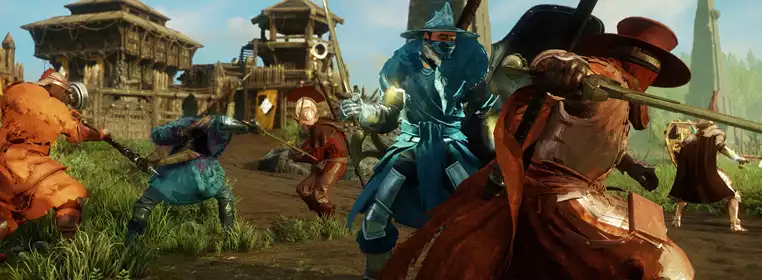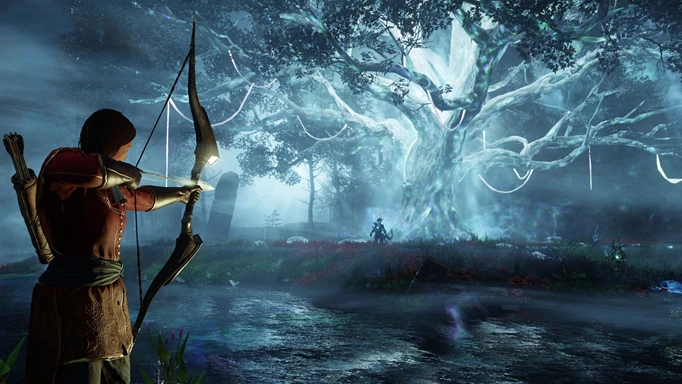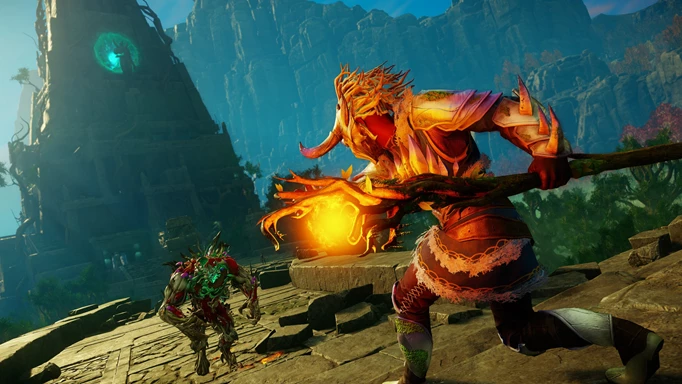New World Best Settings: How To Improve FPS

Optimising your frame-rate and tweaking the best New World settings in Amazons' new MMO is crucial, because while the game isn't too taxing, it does have the odd performance hitch here and there. Thankfully, the recommended specifications for New World aren’t unreasonable and you should be able to get it running on a litany of different systems. With that said however, like any MMO, there are many different areas to visit and activities to take part in - all of which vary on how much your hardware will be taxed. We've got all the New World system requirements and the best New World settings to improve your FPS right here.
Sat in a queue waiting to get into a server? Take a look at our top New World tips.
New World System Requirements

 Click to enlarge
Click to enlargeFirstly you will want to check if you meet the recommended or minimum requirements. This will mostly decide which settings you’ll have to tweak, or if you need to make any changes at all. Here is the game’s listed hardware requirements:
MINIMUM
- Requires a 64-bit processor and operating system
- OS: Windows® 10 64-bit
- Processor: Intel® Core™ i5-2400 / AMD CPU with 4 physical cores @ 3Ghz
- Memory: 8 GB RAM
- Graphics: NVIDIA® GeForce® GTX 670 2GB / AMD Radeon R9 280 or better
- DirectX: Version 12
- Network: Broadband Internet connection
- Storage: 50 GB available space
RECOMMENDED
- Requires a 64-bit processor and operating system
- OS: Windows® 10 64-bit
- Processor: Intel® Core™ i7-2600K / AMD Ryzen 5 1400
- Memory: 16 GB RAM
- Graphics: NVIDIA® GeForce® GTX 970 / AMD Radeon R9 390X or better
- DirectX: Version 12
- Network: Broadband Internet connection
- Storage: 50 GB available space
Resource-wise, the GPU takes the brunt of it in New World. The recommended specs do the job for 1080p/60fps, but if you're playing at 1440p or 4K, you'll want to rock an RTX 2070 at minimum. Performance in-game can vary depending on what you're doing - simple exploration won't be too taxing, but frantic combat can chug and settlements will have your hardware busy, which is why these are the recommended settings to tweak to maximise your frames. Oh, and don't forget about using an SSD for those faster loading times.
- Our New World iron ore, New World briar branches, and New World petalcaps guides can help you complete some quests.
Once you’re in the game and choosing your graphics settings, you’ll have the same decision to make as always - whether you want the max possible frames, the max quality, or a mix of both. No matter what you choose, it’s recommended you try to tailor your settings to reach a consistent 60fps during your questing, gathering, and exploring. This isn’t a competitive shooter where every extra frame is life or death though, and you won’t be getting to play the more competitive PvP modes until later on in your levelling.
Best New World Settings To Improve FPS

 Click to enlarge
Click to enlargeWhen you get into the game’s settings menu there are nine key individual settings that you can scale from low to very high:
Video quality: This is the main pre-set option for all the game’s visuals. Selecting this at medium for example, will turn all your other settings to medium. It’s a good base to start from when tinkering with your settings.
Effects details: This is the setting that affects the finer visual effects, such as smoke, particles, and volumetrics. This setting doesn’t alter frame rates too drastically, so it can be left on the higher end.
Lighting details: This is pretty self-explanatory and affects the quality of the lighting, as well as how realistic it looks. Lighting can be one of the more taxing settings in-game, so be sure to fiddle with this when experimenting with your pre-sets.
Object details: This is what decides the quality of the in-game objects; it’s another setting that doesn’t alter framerates too much when you turn it down.
Post processing details: This covers effects that are applied to images after rendering is complete, like bloom or the darkening of objects. Once again there isn’t a clear performance gain or loss here.
Shadows details: Again, this is easy enough and covers the quality of in-game shadows. It’s another setting where turning it down can help you gain some frames but on low there is a weird effect that causes shadows to move erratically.
Terrain details: This is what decides the terrain quality, which largely involves the natural terrain like fields, hills, rocks, beaches etc. Dropping this setting slightly can also net you a small performance boost.
Texture details: This is one of the most noticeable settings as it affects most of the textures in-game, changing the overall graphical fidelity. It’s another setting that will grant easy performance boosts when turned down but the game begins to look muddy on low.
Water details: Unlike most games where water detail changes the overall quality of the water, in New World it just affects how much it splashes around. It also seems to have no effect on performance.
Whilst these are the main settings that will dictate the performance of your game, there are a few others worth tinkering with. If you don’t have a monitor with G-Sync or FreeSync technology, then make sure V-Sync is enabled to reduce any screen tearing. At the very bottom of the settings, is the option ‘Dynamic Resolution Scaling,’ which should only be enabled as a last resort, if you are at the lower end of the minimum hardware specs and your performance is suffering. This is because it reduces your resolution if the game starts to struggle, which is quite noticeable and often jarring. Another setting that may be worth lowering is ‘Player Nameplate amount’ as it can hurt your frame rate in settlements and busier areas.
In total, if you are really looking for performance boosts, then the main settings you will want to alter are texture details, terrain details, shadow details and lighting details. As previously stated, there are other options that can net you small performance boosts, but it’s best to experiment with these four first to see what kind of baseline you are getting and then work from there.
Stay tuned on GGRecon for more New World guides, news, and our upcoming review.
